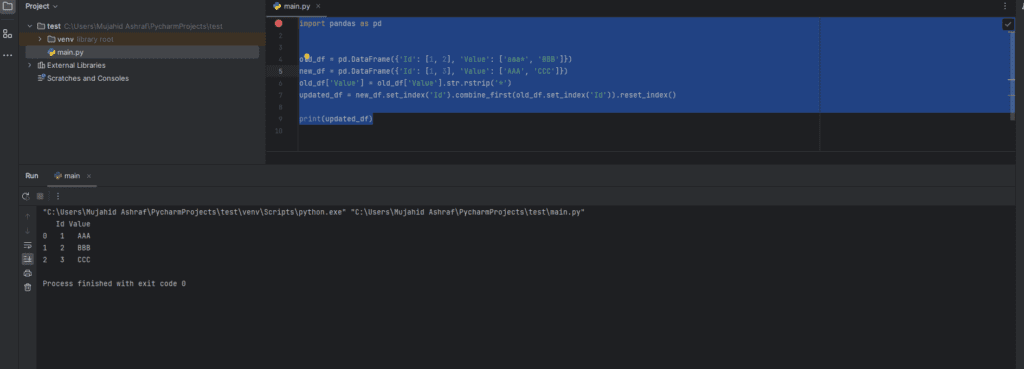Introduction to Update df
Update df with data from another DataFrame is a common task in data manipulation using Python’s Pandas library. It may seem straightforward, but it can be a bit tricky if you’re not familiar with the various methods available. In this article, we will walk you through the process of updating an old DataFrame with data from a new DataFrame, using a specific scenario described by a user.
The Scenario
Let’s start by understanding the user’s scenario:
- There is an “Old DataFrame” with columns ‘Id’ and ‘Value.’
- A “New DataFrame” with the same columns also exists.
- The goal is to Update df with data from the “New DataFrame.”
- The expected result is an “Updated DataFrame” that merges data from both DataFrames.
- The user mentioned that they have tried methods like
concat,join,update, andmergewithout success.
We will address this scenario using Python and Pandas and provide a step-by-step solution with code.
Step 1: Import Pandas and Create DataFrames
import pandas as pd
# Create the Old DataFrame
old_df = pd.DataFrame({'Id': [1, 2], 'Value': ['aaa*', 'BBB']})
# Create the New DataFrame
new_df = pd.DataFrame({'Id': [1, 3], 'Value': ['AAA', 'CCC']})
Step 2: Remove Unwanted Characters from ‘Value’ Column
In this step, we’ll remove the trailing asterisk (‘*’) from the ‘Value’ column in the “Old DataFrame” using the str.rstrip method. This is necessary to match the values in both DataFrames properly.
# Remove the trailing '*' from 'Value' column in Old DataFrame
old_df['Value'] = old_df['Value'].str.rstrip('*')
Step 3: Update the Old DataFrame with Data from the New DataFrame
To Update df with data from the “New DataFrame,” we can use the combine_first method after setting the ‘Id’ column as the index for both DataFrames. This method fills missing values in the “Old DataFrame” with corresponding values from the “New DataFrame.”
# Set 'Id' as the index for both DataFrames
updated_df = new_df.set_index('Id').combine_first(old_df.set_index('Id')).reset_index()
Step 4: Display the Updated DataFrame
Finally, let’s print the “Updated DataFrame” to see the result.
# Display the Updated DataFrame
print(updated_df)
Complete Code
import pandas as pd
# Create the Old DataFrame
old_df = pd.DataFrame({'Id': [1, 2], 'Value': ['aaa*', 'BBB']})
# Create the New DataFrame
new_df = pd.DataFrame({'Id': [1, 3], 'Value': ['AAA', 'CCC']})
# Remove the trailing '*' from 'Value' column in Old DataFrame
old_df['Value'] = old_df['Value'].str.rstrip('*')
# Update the Old DataFrame with data from the New DataFrame
updated_df = new_df.set_index('Id').combine_first(old_df.set_index('Id')).reset_index()
# Display the Updated DataFrame
print(updated_df)
Output

Id Value
0 1 AAA
1 2 BBB
2 3 CCC
Conclusion
Update df with data from another DataFrame can be achieved using Pandas, but it’s important to understand the specific requirements of your task. In this example, we demonstrated how to update an “Old DataFrame” with data from a “New DataFrame” by removing unwanted characters, setting the index, and using the combine_first method.
By following this step-by-step guide and the provided code, you can confidently update DataFrames in similar scenarios and efficiently manage your data manipulation tasks in Python.





